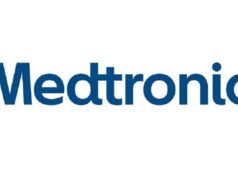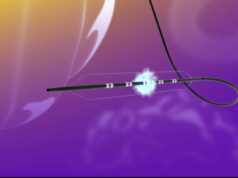The theme of the 31st Charing Cross International Symposium is “Vascular and Endovascular Controversies Update” and Europe’s longest running vascular symposium aims to raise controversial topics so that attendees can challenge the latest evidence and reach a consensus.
It is the time for controversies to take centre stage and be debated by a world-class faculty again. The theme of the 31st Charing Cross International Symposium is “Vascular and Endovascular Controversies Update” and Europe’s longest-running vascular symposium aims to raise controversial topics so that attendees can challenge the latest evidence and reach a consensus.
To be held in London from 4-7 April, the assembled faculty and guests at the symposium will weigh up the evidence for vascular or endovascular reconstruction and medical management of vascular disease. CX 31 will include the latest technology updates and clinical trial presentations as well as a select number of head-to-head debates.This year’s conference will be a hub of practical courses, providing a vital educational opportunity and, at the same time, throwing open debates with some of the leading experts in the world. The range and depth of hands-on activities on offer has grown with the event now introducing several new courses such as the CX Endovascular Simulation, ISET @ CX Complex Case Review, and the Best of ilegx @ CX.
Key focus of endovascular simulation
Tthe CX Endovascular Simulation Course will familiarise participants with leading edge technology for acquiring and assessing endovascular skills. This programme will bring together experts from around the world to examine the role of the simulation in providing hands-on endovascular training on procedure rehearsal, aneurysm repair and endovascular robotics. The latest virtual reality simulators will be featured.
Best of ilegx – Rising limb amputations discussed
Following the great success of the ilegx Consensus Summit Meeting in October 2008, the CX Symposium is running a special course summarising the best features of the initiative launched last year. The rise in lower limb amputations in some European countries and how to prevent and manage the problem will be at the core of the discussions.
Complex cases
For the first time, the International Symposium of Endovascular Therapies (ISET) and CX are cooperating to arrange a joint course on complex case reviews in the Miami style, which will be presented by faculty members. This course continues the successful collaboration with ISET which was instrumental in pioneering the use of live cases more than two decades ago. This session will review a number of complex cases in peripheral intervention, including some of the live cases performed at ISET in January.
3D Imaging Course – Range of aortic procedures
For the second year running, the CX 3D Imaging Course will assess the value of 3D imaging for endovascular aneurysm repair as well as the lessons learnt from 3D imaging of computed tomography scans in the EVAR trials. The course is designed to educate vascular specialists on a range of 3D imaging workstations when planning and conducting aortic procedures. There will also be an opportunity to test drive a range of leading 3D imaging systems for rapid planning of complex aortic procedures.
“3D imaging is the basis of optimal practice for endovascular aneurysm repair. Manipulating 3D images requires special software, time and awareness. We are entering an era where the vascular specialist will need to gain the expertise to use imaging technologies,” said Professor Roger Greenhalgh, chairman of the CX programme.
CX Office-Based Vein Course – All you need to know
As it was so successful in 2008, the Office-Based Vein Practice has been given more presence at this year’s symposium in order to allow more delegates to participate. Treatment of varicose veins is undergoing a revolution. It is becoming less and less accepted that varicose veins should be operated upon using surgical techniques. Now varicose veins can be managed in the office environment in three main ways: radiofrequency ablation (VNUS), endovenous laser therapy and foam.The course objective is to provide a comprehensive overview of everything vascular specialists would need to know to set up an office-based vein practice.
CX Revision Course
This course consists of refresher presentations on useful topics such as clinical trials, imaging and preoperative investigational guidelines. Around 100 vascular surgeons attended this Vascutek-sponsored training day last year. This year’s course will include new presentations on the key trials and the latest evidence in epidemiology, best medical therapy, statistics, endovascular wires and catheters, lower limb ischaemia, venous disease, renal access/transplant, carotid intervention and aortic aneurysms. The course is chaired by Dr Alun Davies, London, UK.
Controversies debated
CX 31will have a number of debates. Saturday 4 April, the first day, will be warmed up by a debate between Frank Veith and Bill Gray on whether surgery is a minor part of vascular disease management. Then the focus shifts to the lower limb. Dierck Scheinert goes up against Thomas Hoelzenbein on whether tibial arteries do better with endovascular procedures than distal bypass. Debates on the following days focus on abdominal aortic aneurysm and EVAR, carotid arteries, thoracic aorta, renal and mesenteric artery stenosis, ruptured abdominal aortic aneurysm and venous management. “The forthcoming symposium will have something for all specialties involved in the care of vascular patients. The programme has been increased this year and includes several new, exciting innovations,” said Dr Rob Morgan.
CX: Did you know?
- The first Charing Cross International Symposium, held in 1978, addressed stroke research.
- In 1982, the conference was held in Hampton Court and attended by Princess Anne. In 1990, the event was visited by the Prince of Wales.
- The 1987 symposium featured the inauguration of the European Society for Vascular Surgery (ESVS)
The symposium moved to Imperial College’s Great Hall in 1999. - Last year, on the 30th anniversary of the symposium, 2,038 delegates from 65 countries participated in the event.













